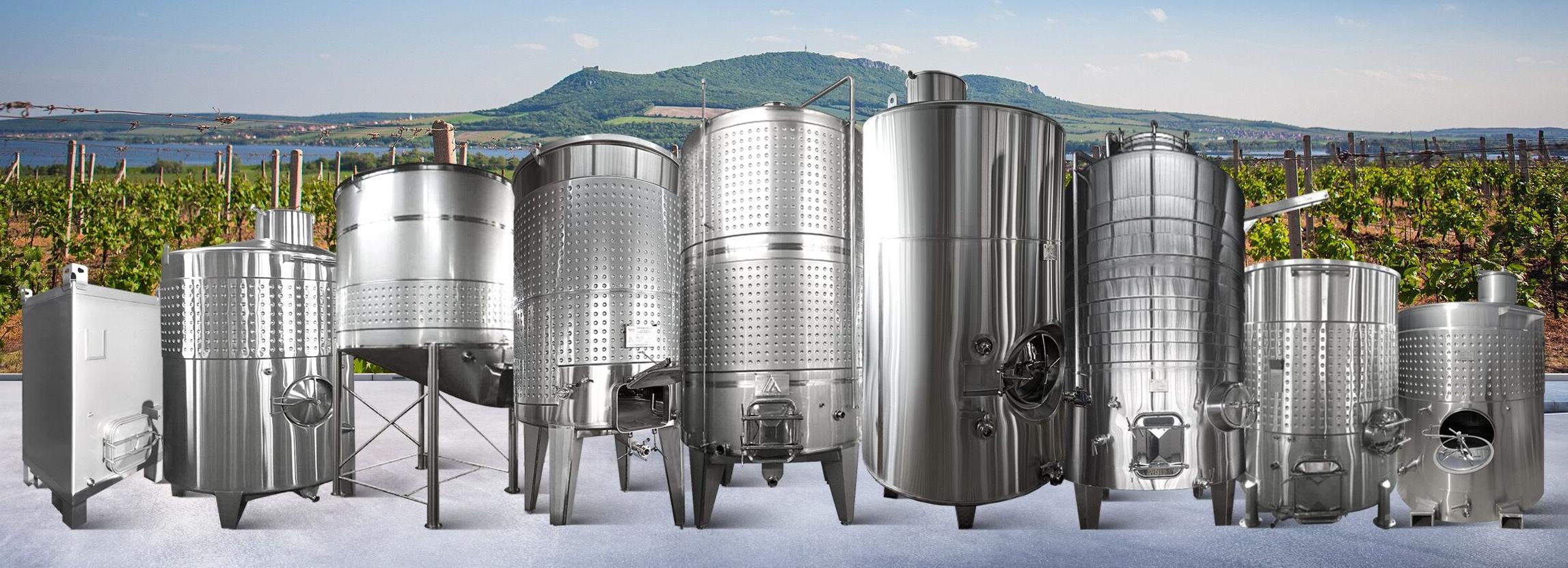A variety of stainless steel wine tanks are available for use in winemaking, designed to offer a difference in each part of the process. Choosing the right type of tank in terms of quality and characteristics of your wine. Choice of tank can affect fermentation, flavour extraction, and storage efficiency. You will learn about different types of tanks and how they can be used for optimization of the winemaking process.
Open Top Fermentation Tanks
Red wine is generally fermented in open-top fermentation tanks. They offer easy access to the grape cap so that you can punch down the skins and seeds during fermentation. Oxygen exposure is also gained with the open design, which is pretty important for developing tannins and getting deep color extraction in red wines. Its open-top tank accessibility makes open-top tanks ideal for cap submersion management, and the slope bottom enables easy skins and seed removal after fermentation.
Variable Capacity Tanks and Pump-Over
Pump-over tanks are purpose-built to maximize flavor extraction. They add flavor and color to the juice from the bottom to the top, where the pulp is submerged to pull out the maximum flavor. The movement keeps the juice circulating, guaranteeing uniform fermentation. Pump-over tanks are ideal for winemakers aiming for flavor-intensive red wines.
Another advantage of variable-capacity tanks is that they feature a floating lid that rises with the wine height. White and red wine fermentation greatly reduces the risk of oxidation, and the adjustable lid is great for this purpose. Reducing headspace helps preserve the freshness and integrity of the wine during fermentation and storage.
Fermenters of Tapered and Horizontal shapes
Their cone-shaped bottom makes it easier to settle grape skins and sediments during fermentation. This conical design allows winemakers to efficiently separate liquids from solids. If you only want to remove sediment without disturbing the clarity of your red wine, this tank is perfect for you.
The horizontal fermentation tanks, however, maximize the contact area between the grape juice and skins. They are extremely effective for the overall fermentation process, using a rotating mechanism that stirs the contents. This also guarantees a more even extraction of tannins, flavors, and color, yielding richer and fuller-bodied wines.
Wine Storage Tanks and Forkable Options
Sometimes, wine making tanks have jackets or double walls to maintain temperature control. Temperature is a key for fermentation and storage. It impacts the taste and aroma of the wine. It helps maintain an ideal environment for fermentation, particularly white wines that require cooler temperatures for fermentation.
Wineries that need flexibility in storage and transportation enjoy convenience of using forkable tanks. These tanks have forklift slots so they can be easily moved around the facility. This portability is especially useful in large scale production where wine is needed to be transferred from one stage of winemaking to another on a regular basis.
Conclusion
Before you optimize your production, it is important to know about the various types of stainless steel wine fermentation tanks. Whether open-top for red wine fermentation, pump-over for enhanced flavor extraction, or tapered for sediment removal, each type of tank has unique features that support specific winemaking processes. Choosing the right tank for your production goal and grape varieties determines your control over the wine quality and its characteristics.
You can make informed decisions about what tank features would work best, whether you need temperature control, portability, or tank capacity. The wrong tank can hurt fermentation outcomes, spoil wine flavors and increase oxidation risks. If you pick the right stainless steel tank for your needs, you will help enhance the quality of your wine production as a whole.


